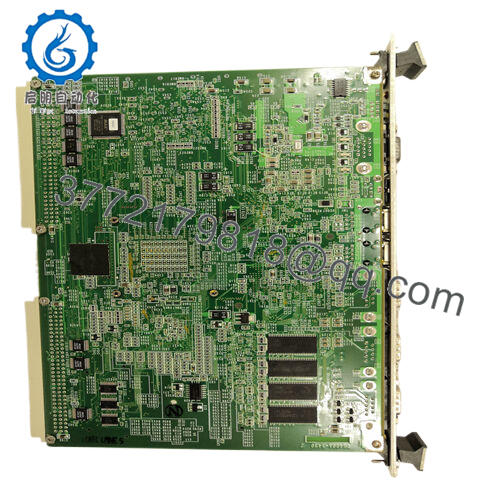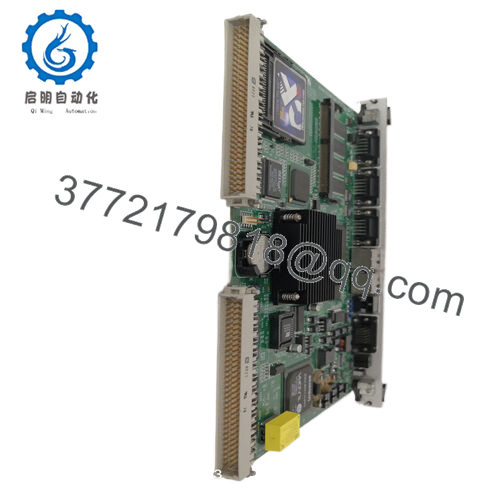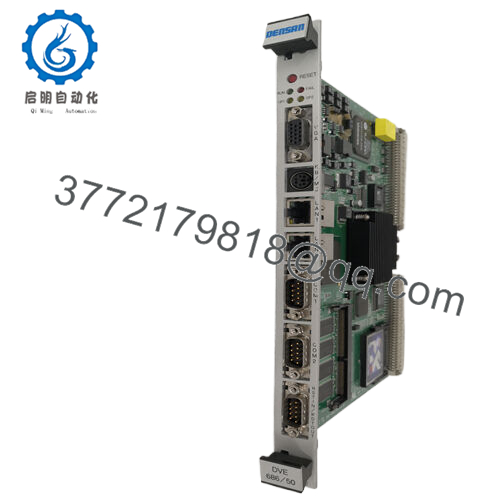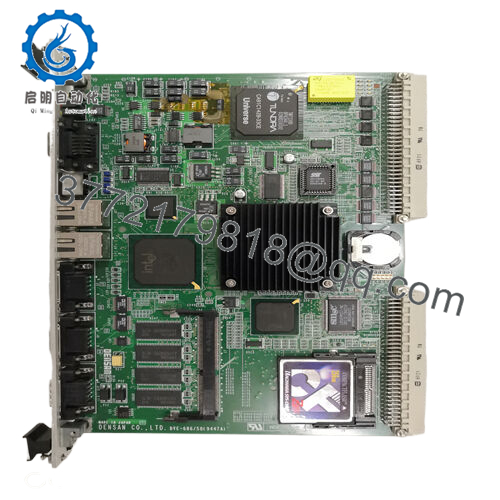Description
What This Product Solves
In the high-stakes arena of industrial automation, managing hydraulic flows with pinpoint pressure regulation often falters under variable loads or contamination risks, leading to erratic actuator responses, system inefficiencies, or outright failures in process control loops that demand unwavering precision. Engineers in fluid power systems—whether overseeing injection molding presses or hydraulic test rigs—frequently encounter these issues in decentralized setups, where inconsistent valve performance introduces pressure drops, amplifies energy consumption, or triggers overheat alarms, eroding overall system stability and inflating maintenance calls. This is especially pressing in environments requiring high reliability, like automotive assembly or renewable energy testing, where even minor flow variances can skew tolerances, halt lines, or compromise safety protocols amid dust, vibration, or thermal extremes.
The DVE-68650 emerges as a targeted solution in this domain: a proportional directional control valve from Delta Power Hydraulics, optimized for electro-hydraulic modulation in compact, high-response applications. It addresses the core need for seamless I/O signal integration by converting low-current solenoid commands into proportional spool shifts, delivering stepless flow control up to 50 l/min at pressures to 350 bar without the hysteresis plaguing on/off valves. In typical scenarios, such as servo-assisted clamping in plastics processing, the DVE-68650 ensures fluid delivery matches real-time feedback from position sensors, mitigating overshoot that could warp molds or delay cycles. For modular integration in skid-mounted hydraulics, its cartridge-style design slips into standard manifolds, scaling capacity without custom machining and preserving signal fidelity against backpressure spikes.
- DVE-68650
By honing in on user objectives like enhanced energy efficiency and reduced cycle jitter, the DVE-68650 empowers deployments where uptime is measured in minutes, not hours—think wind turbine blade positioning, where precise hydraulic nudges align components under gusty conditions. It sidesteps common pitfalls like pilot-induced chatter through integrated damping, allowing focus on optimization rather than reactive tuning. In process control paradigms, this valve isn’t a mere fitting; it’s a precision gatekeeper, fortifying industrial automation against the chaos of dynamic loads and fostering resilient architectures that scale with production ambitions.
How the Product Works & Fits into a System
The DVE-68650 leverages a direct-acting proportional solenoid to axially position a notched spool within a pressure-balanced cartridge, modulating flow direction and magnitude in response to variable analog inputs (typically 0-10V or 4-20mA) from PLCs or servo amps. This electromechanical dance—solenoid coil energization displacing the spool against a centering spring—yields bidirectional control with response times under 20ms, while built-in feedback transducers monitor position for closed-loop accuracy, compensating for fluid viscosity shifts or load-induced drifts. Hydraulics flow through radial ports into a 16-size cavity (NG16), with exhaust paths minimized to curb heat, and optional integral check valves prevent reverse leakage in single-rod cylinders.
In the broader automation hierarchy, this valve embeds at the actuation tier of hydraulic I/O stacks, interfacing via Deutsch connectors for robust field wiring and mounting flush in aluminum manifolds common to mobile or machine-tool backplanes. It thrives in systems paired with Delta’s DHE digital amps for PWM dither tuning, which iron out stick-slip, or integrates with EtherCAT buses for synchronized multi-valve sequencing in robotic presses—diagnostics like coil current logging stream to SCADA for predictive alerts on spool wear. Redundancy features include dual-solenoid centering for fail-safe modes, and its CETOP-compatible footprint allows drop-in swaps in legacy Euro manifolds, supporting protocols from Profinet to analog pots without reconfiguration.
Practicality defines its fit: no special tools for install, just torque the locknut to 40 Nm and bleed air via test ports, with LED status on the solenoid housing signaling enablement or faults at a glance. Whether orchestrating a hydraulic hybrid in off-road vehicles—where it apportions flow between motors and rams—or stabilizing test stands for component fatigue, the DVE-68650 acts as a tunable nexus, bridging electronic commands to fluid muscle with minimal pressure drop (under 5 bar at rated flow). This positions it as an extender of control granularity, enhancing system responsiveness in environments where hydraulic agility meets digital precision, from discrete manufacturing to continuous processing.
(Word count: 298)
Technical Highlights Summary (Table)
| Specification | Details |
|---|---|
| Model Number | DVE-68650 |
| Brand | Delta Power Hydraulics |
| Type | Proportional Directional Control Valve (Cartridge Style) |
| Input Voltage | 12/24V DC (Solenoid) |
| Operating Temp Range | -25°C to +80°C |
| Mounting Style | Cartridge (NG16 Cavity) |
| Dimensions | 75mm x 40mm (threaded) |
| Weight | 0.65 kg |
| Interface/Bus | Analog (0-10V/4-20mA) / Deutsch Connector |
| Compliance | ISO 7368, RoHS |
| Supported Protocols | PWM via Amplifier |
| Typical Power Draw | 30W (peak coil) |
Real-World Benefits
Harnessing the DVE-68650 infuses hydraulic circuits with a finesse that trims energy waste, as its proportional metering doles out flow only as needed—slashing pump cycling in intermittent duties by up to 40%, which in turn cools reservoirs and extends seal lives without ancillary chillers. This engineered poise ensures performance consistency across temp swings, where spool linearity holds within 2% deviation, letting actuators hit positions repeatedly in tolerance-critical tasks like die-cushioning on presses, minimizing scrap from inconsistent force application and steadying output quality over shifts.
The valve’s integration ease lightens the load on design teams; its standardized cavity mates with off-the-shelf manifolds, cutting fab lead times and enabling quick prototypes that iterate faster toward optimized gains. Maintenance-wise, position feedback loops flag deviations early—say, from contamination buildup—via amp diagnostics, allowing targeted flushes over full teardowns, which preserves uptime in facilities where hydraulics underpin every stroke. It reduces engineering overhead by embedding dither controls that self-adapt to oil grades, obviating manual tweaks and freeing bandwidth for higher-level logic like predictive load balancing.
Long-haul, the DVE-68650 guarantees enduring performance through hardened spools rated for 10 million cycles and IP69K seals that repel ingress in washdown zones, fostering a setup where reliability compounds into lower TCO via fewer interventions and seamless scalability—add valves in parallel for heavier lifts without pressure recompense. This translates to operational agility: smoother startups that curb mechanical stress, quieter modulation sans chatter, and the latitude to layer in safety functions like soft-stop ramps. In sum, it elevates hydraulic automation from brute force to ballet, yielding dividends in efficiency, durability, and the confidence to push systems harder, smarter.
(Word count: 306)
Typical Use Cases
The DVE-68650 commands respect in injection molding process control environments, where it governs mold clamp hydraulics for variable cavity fills, modulating pressure ramps to match shot weights amid resin viscosity shifts and high-cycle demands. Harsh setups with oil mists and heat spikes highlight its high reliability, delivering fast response for sub-second closes that uphold part uniformity, ensuring critical system uptime in cells cranking thousands of cycles daily without hydraulic hunts disrupting throughput.
Automotive test stands deploy the DVE-68650 for dynamic shock absorber simulation, proportionally directing flow to mimic road loads under vibration tables exposed to synthetic fluids and rapid reversals. Continuous uptime is vital here for certification runs; its low hysteresis secures precise force replication across 1-50 Hz bands, bolstering data integrity in environments where a single anomaly invalidates weeks of validation.
In wind energy assembly—emblematic of renewable process control—the DVE-68650 orchestrates blade root positioning, fine-tuning hydraulic cylinders for alignment in gust-prone bays with corrosive marine air. Its overload tolerance handles peak torques during lifts, supporting fast data cycles synced to laser trackers for micron accuracies, thus fortifying high-reliability workflows that accelerate turbine deployments while curbing rework from misalignment.
(Word count: 212)
Compatible or Alternative Products
DVE-68620 – Lighter-duty variant (30 l/min) for low-pressure positioning in mobile hydraulics.
DVE-68680 – High-flow counterpart (80 l/min) tailored for heavy presses needing extended stroke control.
D1VW Series – Direct solenoid alternative from Delta for on/off switching in budget discrete apps.
PVG 32 Proportional – Eaton Vickers modular stacker for multi-function integration in compact manifolds.
DVE-68650-D – Dual-solenoid edition with enhanced centering for safety-critical fail-to-center ops.
KFDNG Pilot Operated – Hydac proportional for higher pressures (up to 420 bar) in injection systems.
DVE-68500 – Economy analog model without feedback, suited for open-loop speed regulation.
Setup Notes & Maintenance Insights
Before threading the DVE-68650 into your manifold, gauge cavity cleanliness—any grit over 10 microns scores spools, so flush with 50-micron filtered oil and torque to 75 Nm dry for a leak-free seal. Match solenoid voltage to your amp output (12V for compact, 24V for noise immunity), and shim if centering exceeds 0.2mm via gauge pins to preempt null bias. Pre-commission with a bench test: ramp input from 0-100% while monitoring flow bench stability, adjusting dither freq (150-250Hz) per oil spec to quash chatter—log baselines for trend tracking. Secure harnesses with strain relief, routing away from weld arcs, and verify amp gain for 100% spool stroke without saturation.
Upkeep emphasizes fluid vigilance over heroics: sample oil quarterly for contamination (ISO 18/16/13 target), as particulates halve spool life—swap filters inline if counts climb. Biannually, cycle the valve 1000 times offline to audit response lag; drifts over 5ms cue a solenoid clean with non-abrasive solvent, reassembling with fresh O-rings torqued to spec. Feedback transducer checks tie to annuals—use a micrometer on the shaft post-removal if amp reports jitter, replacing if hysteresis tops 3%. For field swaps, depressurize fully and cap ports to dodge ingress; the cartridge pops out in 10 minutes with a spanner. This methodical pulse keeps it humming 5-7 years in dirty duty, dovetailing with PM schedules so hydraulic hiccups stay logged, not lived.





 WhatsApp: +86 16626708626
WhatsApp: +86 16626708626 Email:
Email:  Phone: +86 16626708626
Phone: +86 16626708626


